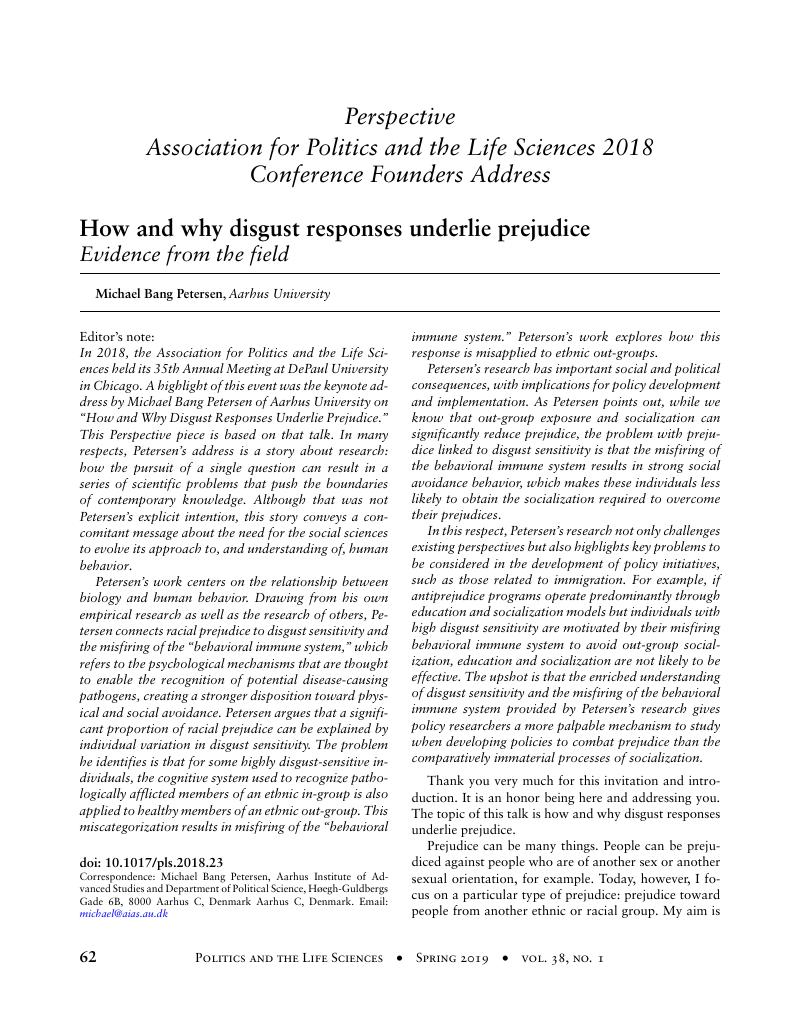Crossref Citations
This article has been cited by the following publications. This list is generated based on data provided by Crossref.
Mansell, Jordan
2020.
Causation and Behavior: The Necessity and Benefits of Incorporating Evolutionary Thinking into Political Science.
Social Science Quarterly,
Vol. 101,
Issue. 5,
p.
1677.
Hsu, Kevin J.
Lei, Ryan F.
and
Bodenhausen, Galen V.
2021.
Racial preferences in sexual attraction among White heterosexual and gay men: Evidence from sexual arousal patterns and negative racial attitudes.
Psychophysiology,
Vol. 58,
Issue. 11,
Bressan, Paola
2021.
Strangers look sicker (with implications in times of COVID‐19).
BioEssays,
Vol. 43,
Issue. 3,
Trawalter, Sophie
Habib, Nana-Bilkisu
and
Druckman, James N.
2023.
Racial bias in perceptions of disease and policy.
Group Processes & Intergroup Relations,
Vol. 26,
Issue. 2,
p.
321.



